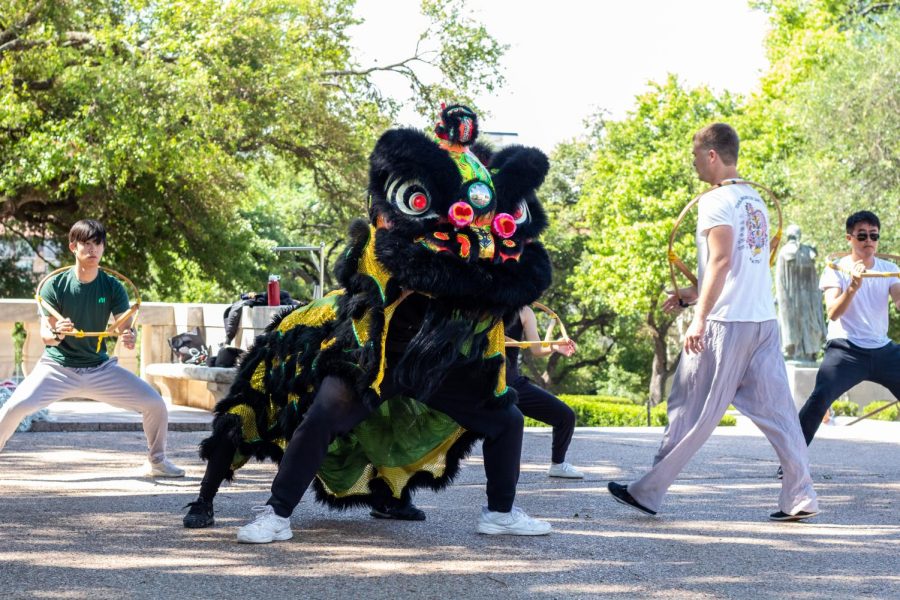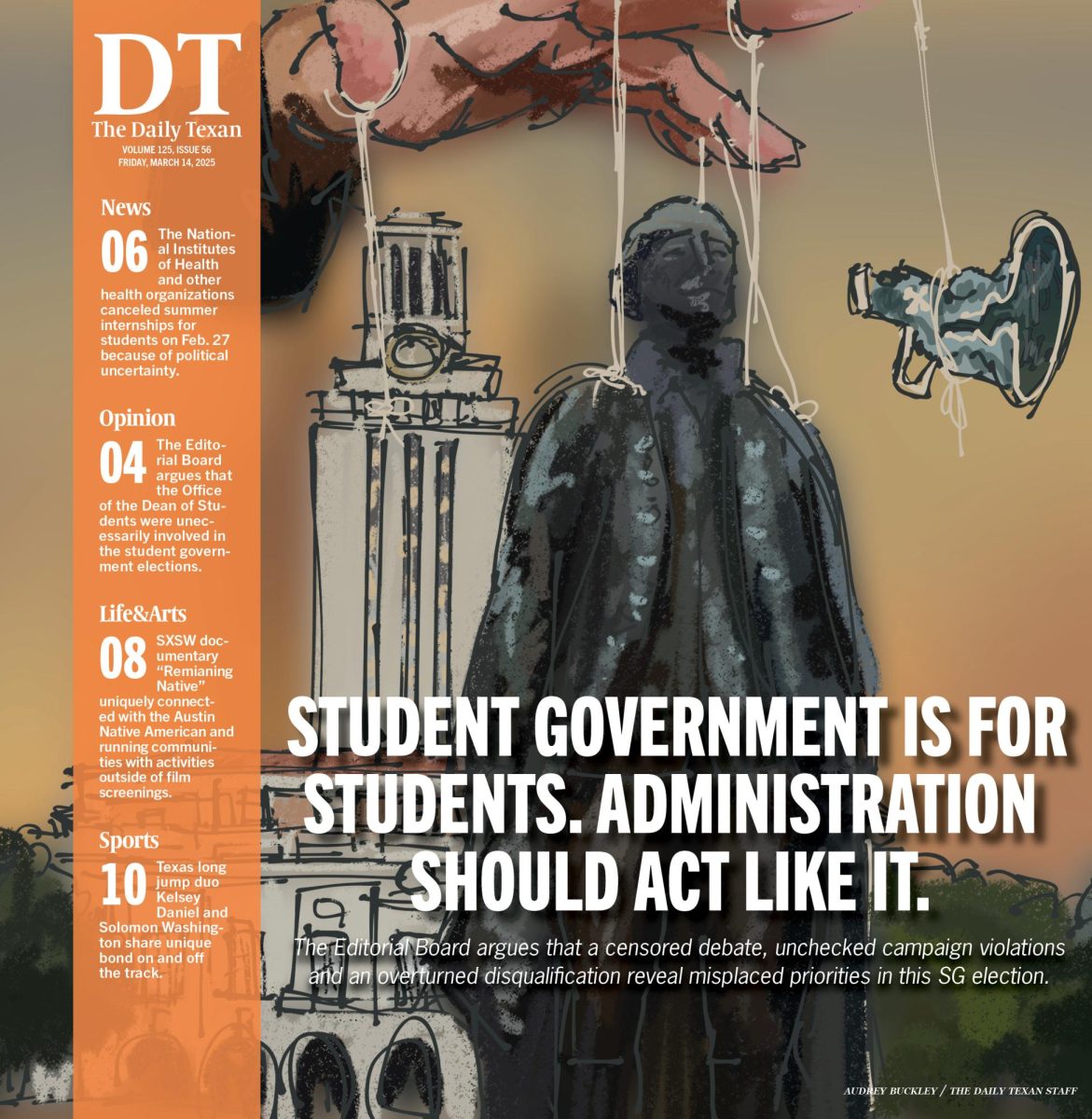Texas Dragon/Lion Dance Team prepares for national championship
April 10, 2023
Anxiously waiting inside the head of the lion, Ana Marcela Cantu listens for the beat of the tanggu to begin performing her first competitive lion dance with her teammates.
“Going to (the) competition, I knew I was getting judged,” architecture senior Cantu said. “It was a little bit nerve-wracking. I had to convince myself that it was (just like) a regular performance.”
Cantu said she remembers last year’s competition as one of her favorite memories from being on The Texas Dragon/Lion Dance Team, an organization made up of UT students and local community members with the goal of sharing their passion for lion dance with the rest of Austin. Started in 2000, the organization currently has 21 active members.
The team now prepares to compete in the Traditional Lion Dance category of the United States Dragon and Lion Dance Federation national championships from June 24–25 in Austin. The seven- to 10-minute competition piece must follow a lion’s quest to achieve one of the three objectives common in traditional lion dance, including picking greens (采青), picking wine (采酒青) or picking mushroom — known as flower of immortality (采灵芝).
Yashna Gongal, who joined the team two years ago after tagging along to a practice with a friend, said the organization welcomes participants of all experience levels with open arms.
“The team atmosphere is very friendly,” architecture senior Gongal said. “You can start as a beginner (or) you can already have experience. You can always learn from anyone that’s on the team.”
Performed for special occasions such as Lunar New Year, lion dance originated in China and symbolizes good luck and prosperity. A traditional Chinese drum called the tanggu represents the heartbeat of the lion and keeps the tempo of the dance while the gong and cymbals mirror the lion’s thoughts.
“I came in not knowing what dragon lion dance was at all,” Gongal said. “But once I came here, I learned what it is like bringing life to this puppet and bringing a whole story to this lion or dragon.”
Head instructor Taran Champagne said he aims to tighten the team’s skills before the competition.
“We focus on trying to make certain we have a good standard, but (for a) competition, the level is even higher,” Champagne said. “You want to have everything down to a tee. What you’re doing is crafting a puzzle or a story that your lion is going to tell through the competition.”
When coaching, Champagne said he most enjoys watching his students who join the organization with no experience work toward proficiency and excellence in the art form.
“The goal when you teach isn’t just to have students but eventually to have future teachers,” Champagne said. “Eventually, you want people to go on and share this art that’s been shared with you.”












